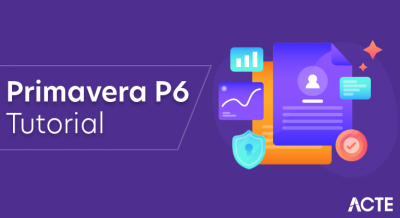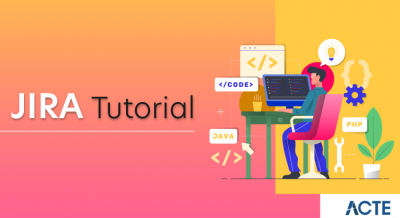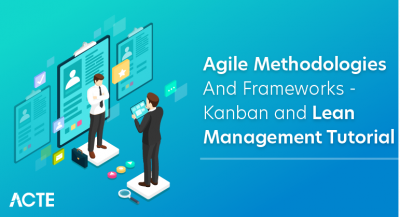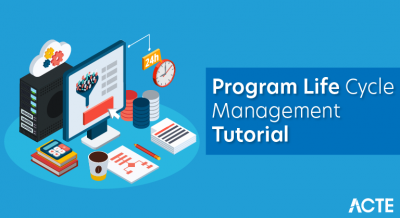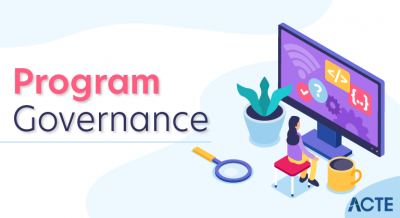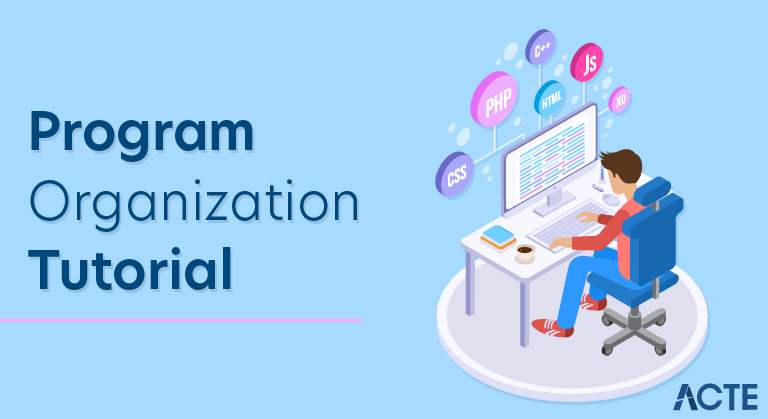
The process ‘defining a program’ provides the basis for deciding whether or not to proceed with the program. The inputs, controls, roles, steps and outputs of this process are as follows:

Let us discuss the inputs to this process.
Inputs of the Process in Defining a Program
The inputs for ‘defining a program’ are as follows.
- The program brief, which is used for developing a detailed definition;
- Organisational strategy, which is used as a reference for ensuring program alignment and program preparation plan, which is prepared in the ‘identifying a program’ process.
- If a program is ‘emergent’, the details of the current status of the projects involved act as input.
- The plans for these projects, along with the decisions on current activities, that is, whether they are to be included in the program or not, also act as inputs.
Principle Controls of the Process in Defining a Program
The principle controls of this process are:
- Governance arrangements defined as a part of the program preparation plan;
- Development of a viable business case by the Program Board;
- Final approval to proceed from the Sponsoring Group when they are satisfied with the business case, blueprint and governance arrangements that are prepared as part of this process; and
- Independent assurance reviews carried out to validate the information baselines.
Key Roles of the Process in Defining a Program
- The key roles identified in this process are that of the Senior Responsible Owner, Program Board, Sponsoring Group, Program Manager, Business Change Manager or BCM and Program Office.
There are seventeen steps involved in this process, which are as follows:
- Establish the infrastructure for ‘defining a program’;
- Establish the team to define the program;
- Identify and analyze the stakeholders;
- Refine the vision statement;
- Develop the blueprint;
- Develop the benefits profiles;
- Model the benefits and refine the profiles;
- Validate the benefits;
- Design the projects dossier;
- Identify tranches;
- Design the program organization;
- Develop governance arrangements;
- Develop the program plan;
- Develop and confirm program business case;
- Consolidate the program definition;
- Prepare for the first tranche; and
- Approval to proceed.
In this lesson, we will focus on the first four steps. In the following lessons, we will discuss the rest of the steps.
Outputs of the Process in Defining a Program
The outputs include:
- Assurance review reports and
- The program structure that is now firmly in place.
- For emergent programs, all the current activities will be stopped until they get an approval to be a part of the program.
- Once approved, the activities will proceed as a program.
- The most important outputs for this process are management, governance and boundary baselines including the approved business case.
- At the end of the process, approval to either proceed to the first tranche or stop the program will be given by the Sponsoring Group.
Advantages of structured programming
The following are the different advantages of structured programming
- It is user friendly and easy to understand.
- Similar to English vocabulary of words and symbols.
- It is easier to learn.
- They require less time to write.
- They are easier to maintain.
- These are mainly problem oriented rather than machine based.
- Program written in a higher level language can be translated into many machine languages and therefore can run on any computer for which there exists an appropriate translator.
- It is independent of machine on which it is used i.e. programs developed in high level languages can be run on any computer.
Disadvantages of structured programming
The following are the disadvantages of structured programming:
- A high level language has to be translated into the machine language by translator and thus a price in computer time is paid.
- The object code generated by a translator might be inefficient compared to an equivalent assembly language program.
- Data type are proceeds in many functions in a structured program. When changes occur in those data types, the corresponding change must be made to every location that acts on those data types within the program. This is really a very time consuming task if the program is very large.
- Let us consider the case of software development in which several programmers work as a team on an application. In a structured program, each programmer is assigned to build a specific set of functions and data types. Since different programmers handle separate functions that have mutually shared data type.
- Other programmers in the team must reflect the changes in data types done by the programmer in data type handled. Otherwise, it requires rewriting several functions.
Step 1: Establish the Infrastructure for ‘Defining a Program’
- It is important to establish the program infrastructure at the beginning. This will provide the team with the means to successfully conduct the necessary activities.
The infrastructure might include items such as:
- Office accommodation for the team,
- Configuration management for maintaining consistency of the necessary information which is both increasing and evolving,
- Software tools required for the job and
- Office equipment such as computers and printers.
As ‘defining a program’ progresses, the volume of information will increase and the documents produced in this process become interrelated to each other.
For example, any change in benefits profiles might impact the benefits management strategy, benefits management plan, program plan, blueprint, business case and so on.
Therefore, it is essential to have all the documents synchronized constantly though multiple changes have been made. This control is provided by the configuration management tools.
In the next section, we will discuss the second step, that is, ‘establish the team to define the program’.
Step 2: Establish the Team to Define the Program
The program preparation plan prepared in ‘identifying a program’ is used to identify the skills and resources for selecting and appointing the team.
The Appropriate skills team will need:
- Appropriate skills,
- Knowledge and
- Experience in areas relevant to the program and its management.
All formal roles like Business Change Managers or BCM and Program Manager need to be identified and the positions must be assigned to the right people.
At this point, Special skills like:
- Business and market analysis, which help in creating the blueprint,
- Benefits or options analysis is required. Options analysis is about evaluating all the options and selecting the best solution available.
The members with these skills must be added to the team as per the instructions provided in the program preparation plan to ensure that the development of these information baselines starts as soon as possible.
Ensure assurance arrangements are in place to support and monitor the direction of the program.
In the next section, we will focus on the third step ‘identify and analyze the stakeholders’.
Step 3: Identify and Analyse the Stakeholders
Let us discuss the activities performed in this step. The various activities to be performed during ‘identify and analyze the stakeholders’ are as follows:
- All the program stakeholders and their interests in the program need to be identified. The stakeholders can be internal, external, supportive, unsupportive and operational stakeholders.
- It is important to identify those stakeholders whose interests or influences might be a hindrance for the program as they might prevent successful outcomes of the program.
- Input from Business Change Manager is critical to identify the operational stakeholders and engage high impact stakeholders at an early stage. This information is very useful while planning stakeholder engagement.
- Create stakeholder profiles and store the stakeholder analysis result in it. It will include information like the stakeholder map, impact assessment, and analysis information.
- The stakeholder analysis will identify various information needs and communication flows that need to be established as part of the program communication.
- Analysis of stakeholders must be started at the beginning of ‘defining a program’ process as this will enable the program team to engage stakeholders at an early stage. Early engagement of stakeholders has a critical impact on their attitude.
Step 4: Refine Vision Statement
The outline vision statement contained in the program brief is refined into program’s vision statement. The importance of this step includes the following:
- The purpose is to share the transformed, beneficial future state with the program’s wide audience of stakeholders and encourage buy-in and commitment from them.
- It is important to share an accurate ‘big picture’ with stakeholders as all of them may not necessarily understand it or may have a different understanding altogether.
- This is an important step because based on the stakeholders’ feedback, the vision statement can be updated to adapt to the stakeholders’ need and avoid unnecessary conflicts while setting the program agenda.
Step 5: Develop the Blueprint
Developing the blueprint involves many concepts of organizational design. The features of a blueprint are as follows:
- It may encompass all dimensions of the organization or business, such as cultural aspects, structure, processes, and activities. The way these aspects are to be changed must be defined.
- To start preparing the blueprint, the gaps in ‘as-is’ and ‘to-be’ scenarios need to be analyzed. The gap analysis also provides a critical input for designing the projects dossier and program plan.
- The blueprint is designed to realize the required benefits that must be balanced against the costs of realizing those benefits.
- The blueprint does not need to be expressed in detail. Detailing is done by projects while developing more detailed designs and specifications, to meet the requirements of the ‘to-be’ model, are defined in the blueprint.
There are many options for achieving the required changes with associated costs and impacts. The options are as follows:
- The business case is developed in parallel with the blueprint to ensure consistency across the proposed changes to the organization; the costs of incorporating the changes and realization of benefits being achievable.
- The blueprint, benefits maps, projects dossier and program plan are designed together, with the emerging business case acting as the moderator. This ensures that all the documents are consistent and updated with the latest changes.
- The first benefits map can be developed from the first version of the blueprint. It would be enhanced when estimates of time and cost are available from the program plan.
- The inclusion of this information in the business case provides the control to judge whether developing the program designs is ideal in terms of acceptable balance among time, cost, risks, and benefits.
Step 6: Develop Benefit Profiles
Benefits are identified from the vision statement and program brief. Each benefit and dis-benefit must be defined in the benefits profiles. The other important features of benefits profiles are as follows:
- The total set of benefits profiles provides a planning and controlling tool to track the progress of delivery and realization of the benefits.
- The benefits profiles will be defined as the program is developed.
In the next section, we will continue our discussion on ‘develop benefits profiles’.
Step 6: Develop Benefit Profiles (contd.)
- Each benefit needs to have a baseline measurement. As the business prepares to go through a change cycle, it is important to understand its starting point. To do this, Key Performance Indicators or KPIs for each benefit are established using the ‘as-is’ and ‘to-be’ information in the blueprint.
- ‘As-is’ information provides the baseline, and the ‘to-be’ information includes the performance measures, which will indicate that benefits have been achieved. These indicators will be tracked to assess the business stability during the delivery of benefits.
Each KPI must be carefully visited and adjusted if needed. Some facts related to KPIs are as follows:
- Some KPIs may not be suitable for measuring benefits, while others may need to be adjusted as a result of the operational change.
- Some measurements may also be subjected to deviations as a result of normal process variation. One example is that more people fall sick during winter. So, if hours spent in the office are taken as the KPI, an incorrect conclusion might be reached and the program might be blamed.
- Performance criteria from contracts, services, arrangements, and others may also have to be taken into account and re-negotiated, particularly to understand any penalties that could occur, due to performance deterioration.
Step 7: Model the Benefits and Refine the Profiles
Information on the vision statement and program brief provide the input for the initial design of benefits profiles. The benefits that are extended or detailed and profiled from these documents are normally the end benefits of the program.
The benefits profiles are refined when:
- As the blueprint is designed, these benefits can be refined.
- Benefits maps are initially modeled by using information from the projects dossier and the program plan.
- The mix of benefits, dependencies on project outputs and other benefits become clearer, and as a result benefits, profiles are further refined.
- Having too many benefits defined will increase the cost and complexity of the program. Group the benefits by priorities or other coherent ways to rationalize the benefits.
In the next section, we will focus on the eighth step that is, ‘validate the benefits’.
Step 8: Validate the Benefits
To validate benefits, the focus needs to be only on realistic benefits. For that, the benefits must be validated based on the following criteria:
- Benefits must represent some aspects of the program’s desired outcome.
- Benefits need to be linked to the strategic objectives of the organization as otherwise they are not helpful and can be discarded.
Step 9: Design the Project Dossier
- The projects dossier represents the program’s approach and describes how it will deliver the desired outcomes and benefits.
The features of the projects dossier are as follows:
- It is used as a basis for developing the program plan.
- The vision statement, blueprint, benefits profiles and benefits maps provide the basis for designing the projects and any other activities that are necessary for delivering the new capabilities.
- The projects dossier may also include some ongoing projects, which have been included as a part of the program along with newly identified projects.
Step 10: Identify Tranches
- The outcomes described in the vision statement and blueprint cannot be delivered in a single pass. They will typically need progressive refinements or step-changes in ‘delivering the capability’.
These step-changes can be used to define tranches. The other activities performed in this step are as follows:
- The projects and activities in projects dossier are scheduled together for displaying their relative timescales and dependencies.
- The delivery is built into tranches, reflecting the step changes in capability. It is difficult to predict how to achieve the vision in the early stages of the program.
- Early tranches may be designed to explore and prove or disprove different approaches to achieve the vision.
Step 11: Design the Program Organisation
The organization for directing, managing, controlling and supporting the program has to be designed. Successful program delivery requires:
- Sufficient resourcing of the program and
- Change management activities. The structure must enable effective decision-making and efficient communication flows among various members of the program team.
The activities involved in the step, ‘Design the program organization’, are as follows:
- Each role needs to be carefully defined with its specific accountabilities, responsibilities, and tasks together with skills and required competencies. Individuals with required skills must be identified to take on these roles. Sometimes, it is difficult to find people who can fit into the roles appropriately.
- In such a scenario, training must be planned, to ensure that people have acquired expertise. This can also be addressed by using resources with greater skills and experience to coach and mentor others.
- There might be times when many individuals assigned to program roles will have operational responsibilities as well. In such cases, the workload needs to be prioritized.
- It needs to be ensured that the conflict resolution roles are in place, to resolve issues related to resource allocation and sharing. There needs to be an understanding between the program and line managers on how to allocate the time of the shared resources, who will manage the resource and how conflict can be resolved.
- If it is necessary to procure external resources for the program, it must be planned in such a manner that sufficient time and resources are available for the procurement.
Step 12: Develop the Governance Arrangements
- Program management governance strategies must cover how the program is going to handle the inevitable complexities and interdependencies. These strategies are designed to integrate with the corporate governance of the organization.
Some strategies are:
- Benefits management strategy
- Information management strategy
- Risk management strategy
- Stakeholder management strategy and so on.
In the next section, we will discuss the thirteenth step that is, ‘develop the program plan’.
Step 13: Develop the Program Plan
- The program plan is developed by bringing together the information on projects, resources, timescales, costs, risks and monitoring and control. As the number of information increases, the program plan will improve.
The process of developing the programme plan is as follows:
- Initially, an outline program plan displaying the estimated relative timescales for projects is created.
- This plan must identify where assurance reviews of progress and benefits realization can be carried out.
- It is perfectly acceptable for the program plan to incorporate and aggregate other plans to implement governance strategies, where this is optimal.
Once this happens, there will be one program plan that will include benefits realization plan, resource management plan, and others.
In the next section, we will discuss the fourteenth step that is, ‘develop and confirm the program business case’.
Step 14: Develop and Confirm Program Business Case
- The business case starts taking shape in the process, ‘identifying a program’. It is further developed in the process, ‘defining a program’. Once arrangements for managing a program are developed, the final business case emerges.
The functions of the program business case are as follows:
- The business case brings together the information about the program covering the costs, benefits, timings, and risks so that the overall value for money and achievability of the program can be assessed.
- This, in turn, will help in making appropriate management decisions about the viability of the program.
The business case needs to be refined as the program proceeds, especially at the end of tranches, where formal reviews objectively judge the success achieved so far.
In the next section, we will focus on the fifteenth step that is, ‘consolidate program definition’.
Step 15: Consolidate the Program Definition
The process involved in the step, ‘consolidate program definition’ is as follows:
- The information produced in the process, ‘defining a program’, can be consolidated. This can be developed as a complete set of documents including the blueprint, business case, various plans and others with an executive summary.
- It can also be developed as a simple summary with links to other documents.
- The full set of program definition documents should be updated as per the process followed in ‘configuration and change control’.
- The program definition documents are assembled into information baselines.
Step 16: Prepare for First Tranche
- As the program has more clarity at this stage, it can prepare for the first tranche. It is usually suggested not to prepare for all the tranches in advance, as it may lead to wastage of time and resources, in case the program is closed.
The activities included in preparing for the first tranche are as follows:
- Preparations are to be made to establish the program’s governance and organization.
- The physical environment and infrastructure required for managing the next tranches should be specified.
- Plans are to be developed to establish governance and organization structure.
These steps are repeated for each tranche. In the next section, we will discuss the last step, that is, ‘approval to proceed’.
Step 17: Approval to Proceed
‘Approval to proceed’ involves four steps. The steps are as follows:
First: It starts with the approval from the Senior Responsible Owner or SRO and the Program Board for the complete set of documents. These documents describe the program including its governance and plans. They also describe the business case.
Second: Once approved by the SRO, these documents are forwarded to the Sponsoring Group for endorsement. Endorsement by the Sponsoring Group confirms that the program is designed to meet their expectation and requirements.
Third: An objective, unbiased and independent assurance review of the business case is obtained with the help of the Office of Government Commerce or OGC Gateway review. Such a review may be a contractual obligation or an internal assurance review providing an unbiased appraisal regarding the success of the program.
Fourth: Finally, the Sponsoring Group gives its approval on behalf of the organization, and authorizes the SRO to proceed with the program, and commits to the investment required for the program. In a program, it is not always possible to commit to the total investment, so this decision is taken at the end-of-each tranche.
Roles and Responsibilities
- We will focus on the roles, namely, the Senior Responsible Owner, Program Manager, Business Change Manager or BCM and Program Office.
Senior Responsible Owner or SRO
- The SRO is accountable for each step in the process of establishing the infrastructure for developing the blueprint, business case, and other governance arrangements.
Program Manager
- The Program Manager is responsible to get the work done for most of the steps involved, such as ‘identify and analyze stakeholders’, ‘refine the vision statement’ and ‘develop governance arrangements’.
- The Program Manager also gives inputs to the Business Change Manager when consulted.
Business Change Manager or BCM
- The BCM is responsible for all the steps that are related to benefits, such as ‘develop the benefits profiles’, ‘validate and model the benefits’, and ‘refine the profiles’. In these steps, the BCMs consult the Program Manager for inputs.
- Similarly, the BCMs provide inputs to the Program Manager during other steps. In certain cases such as ‘identifying the tranches’ and ‘approval to proceed’, the Program Manager shares the responsibility with the BCM.
Programme Office
- The Program Office mostly plays the role of a consultant or provides information needed for the steps.


